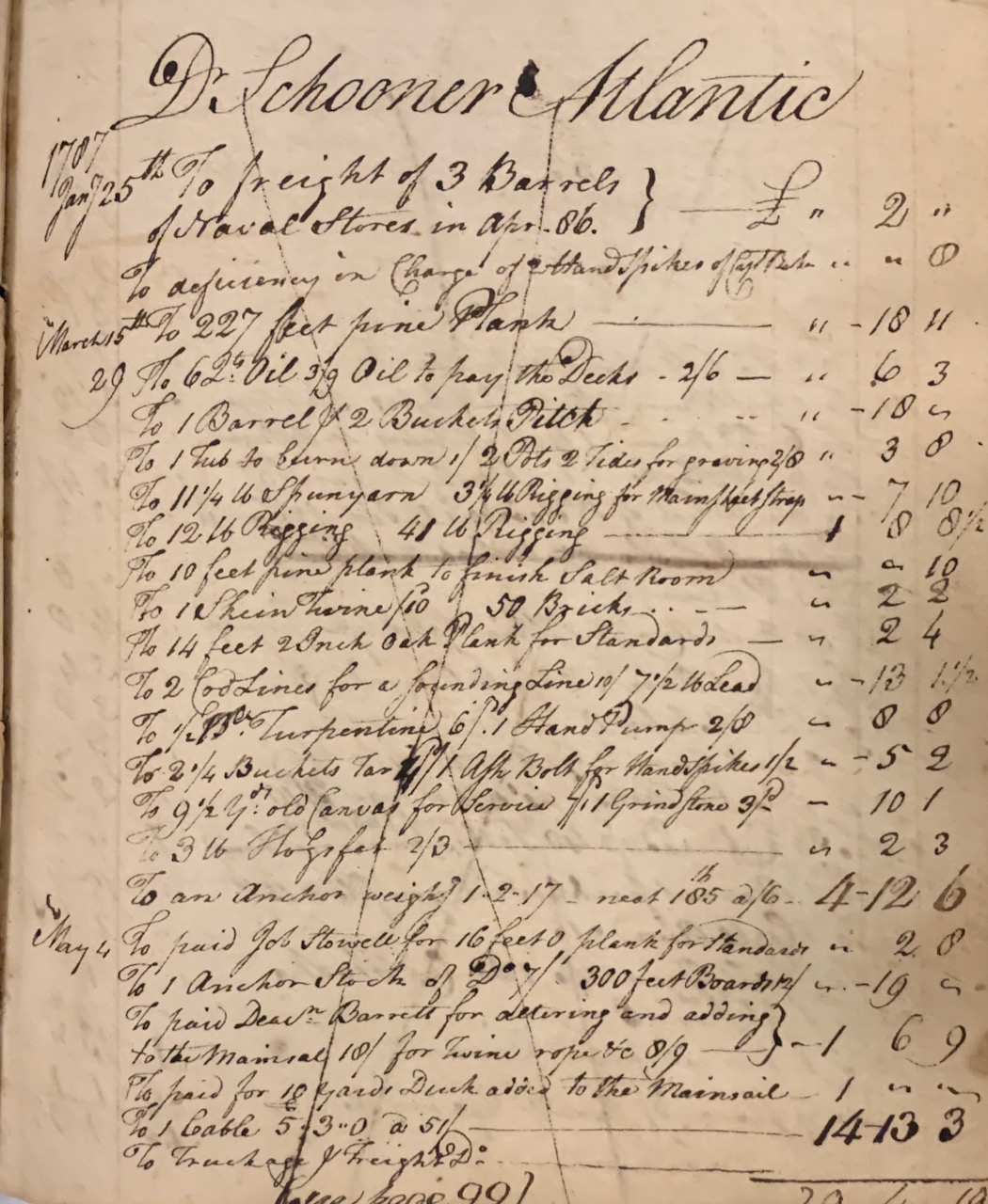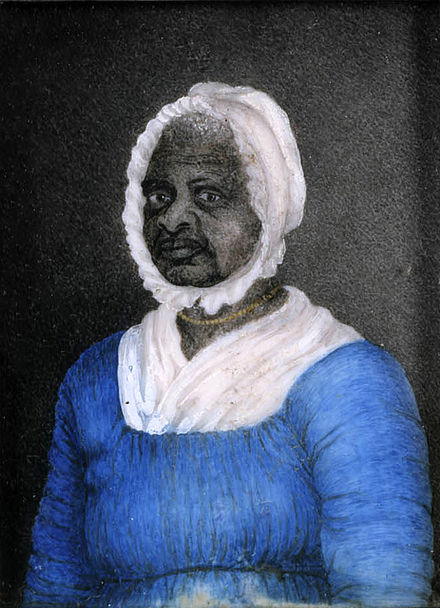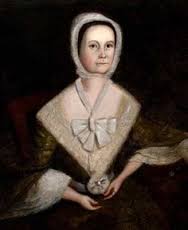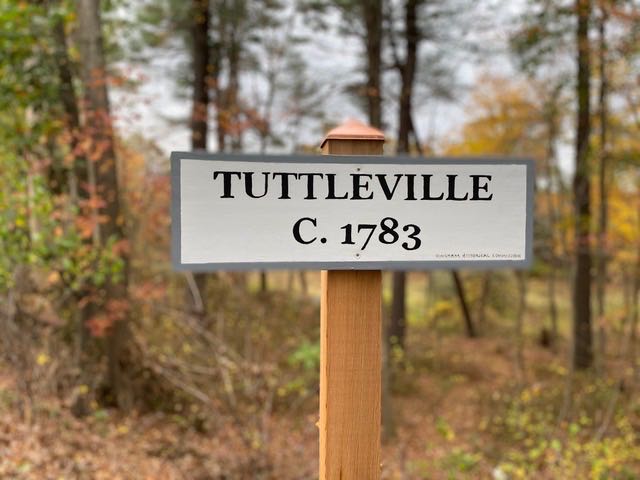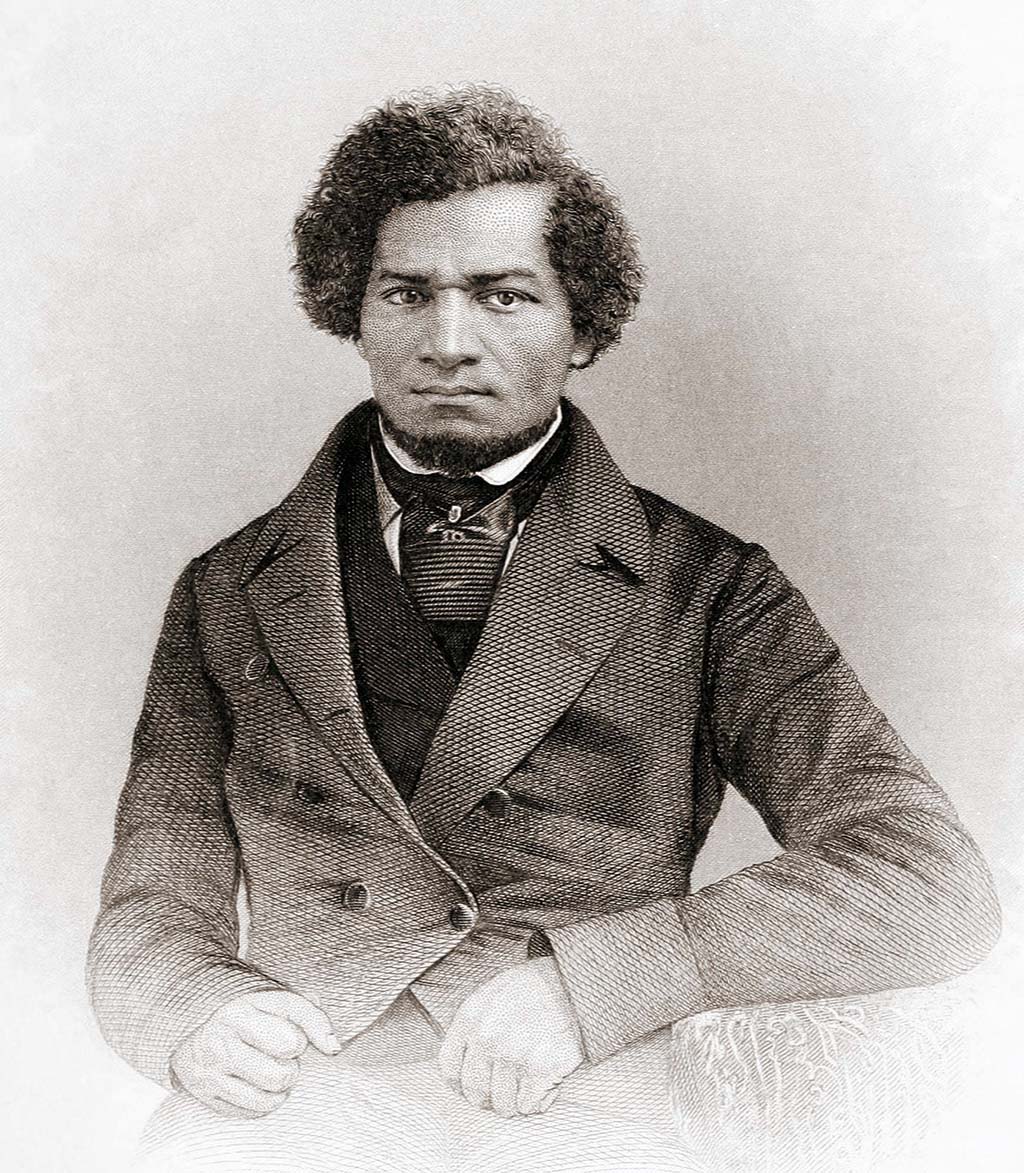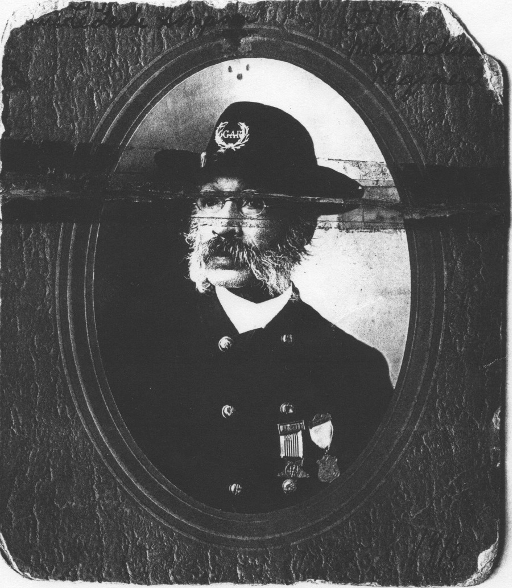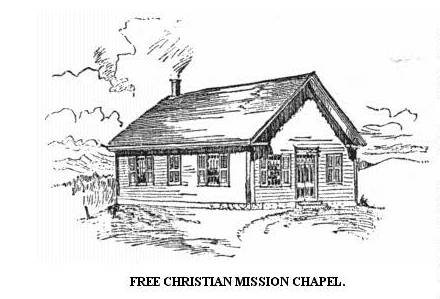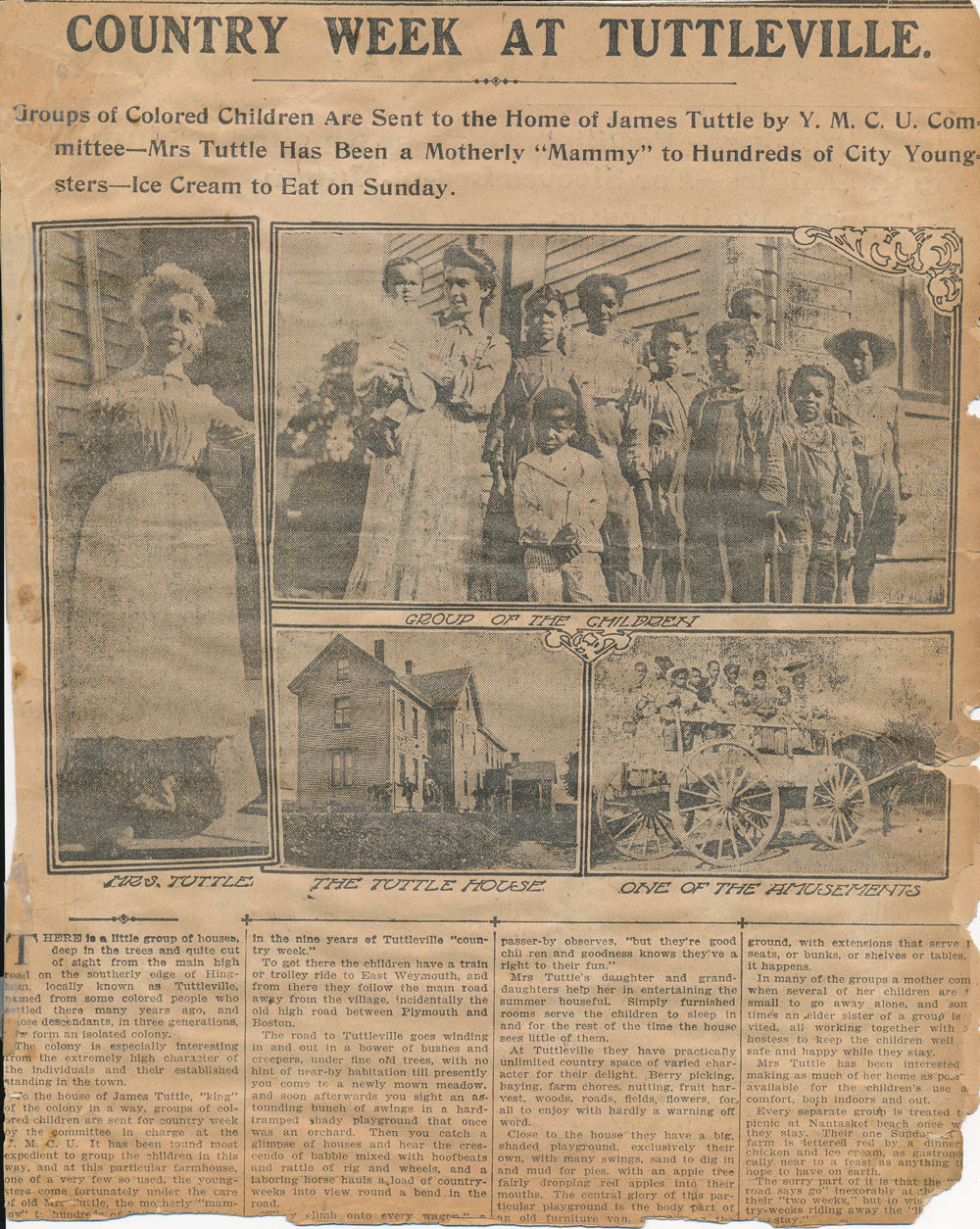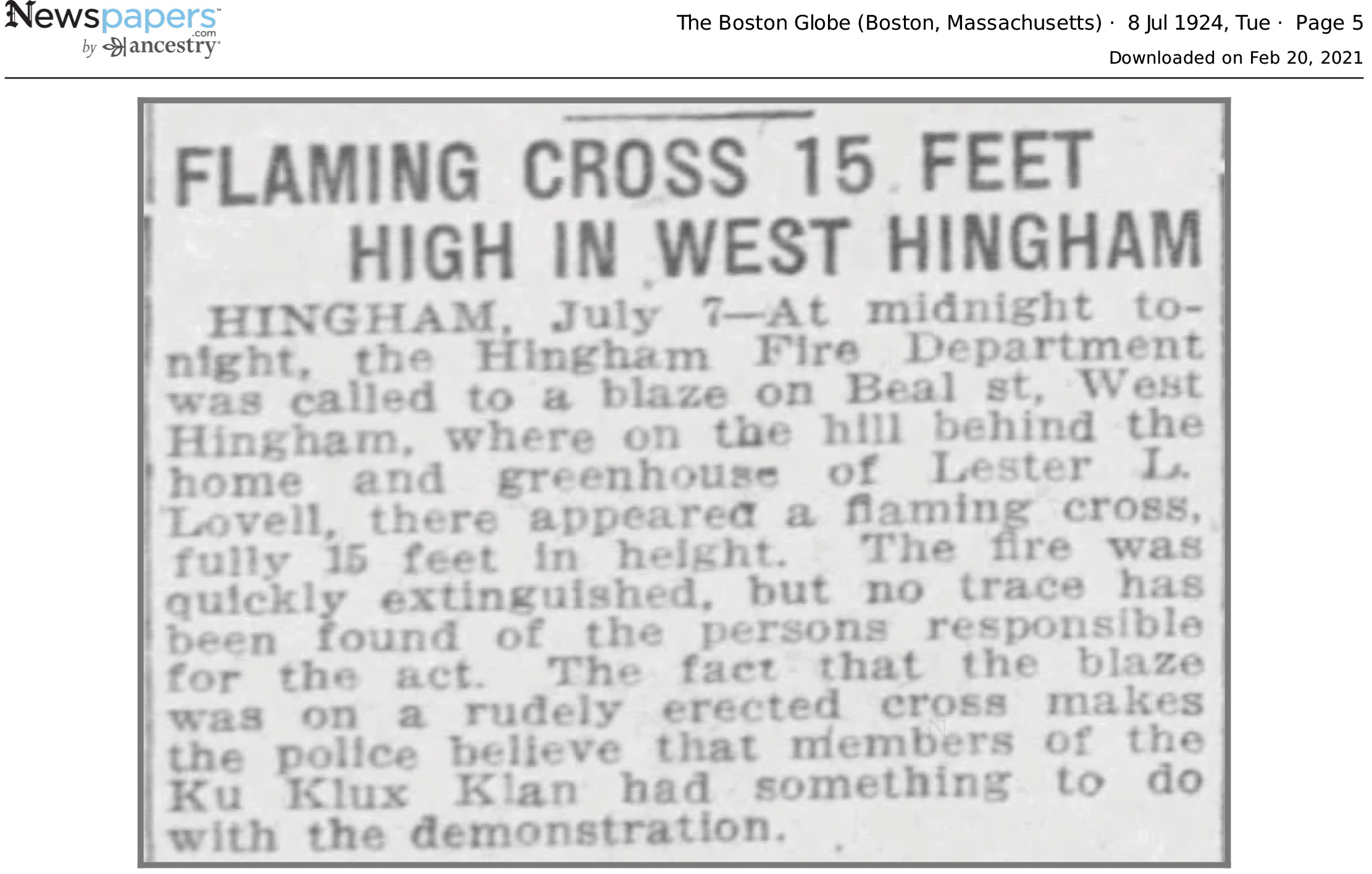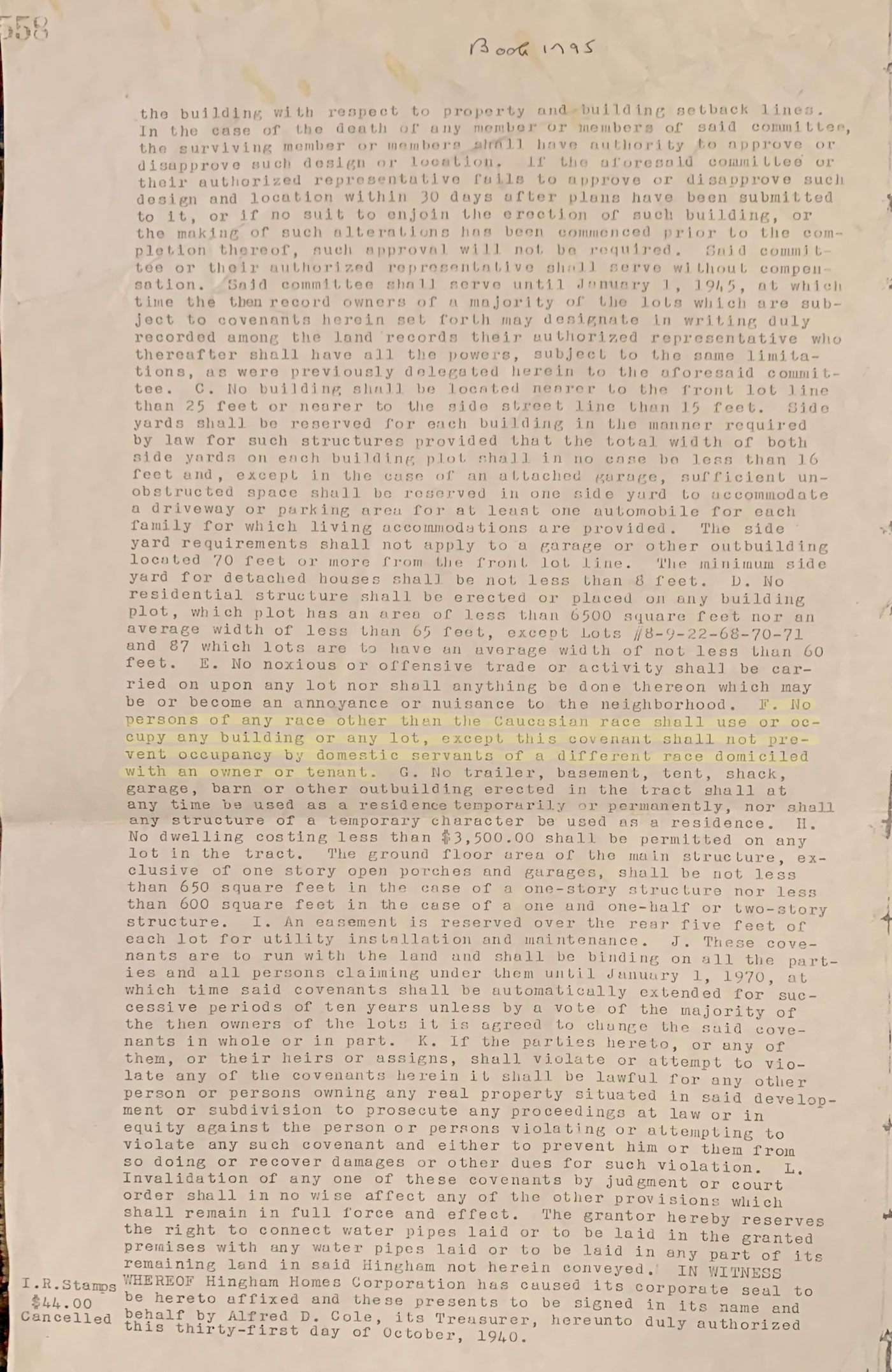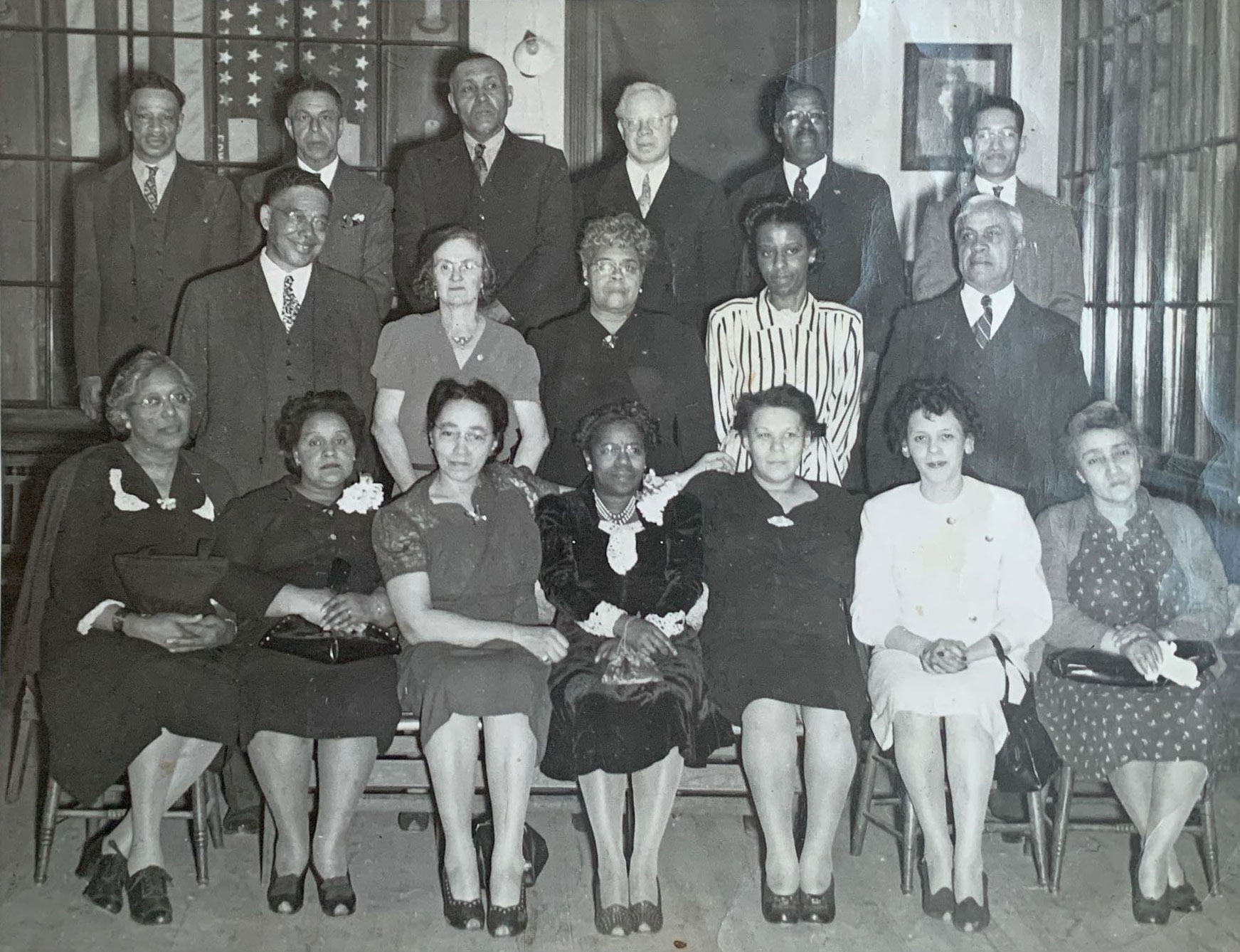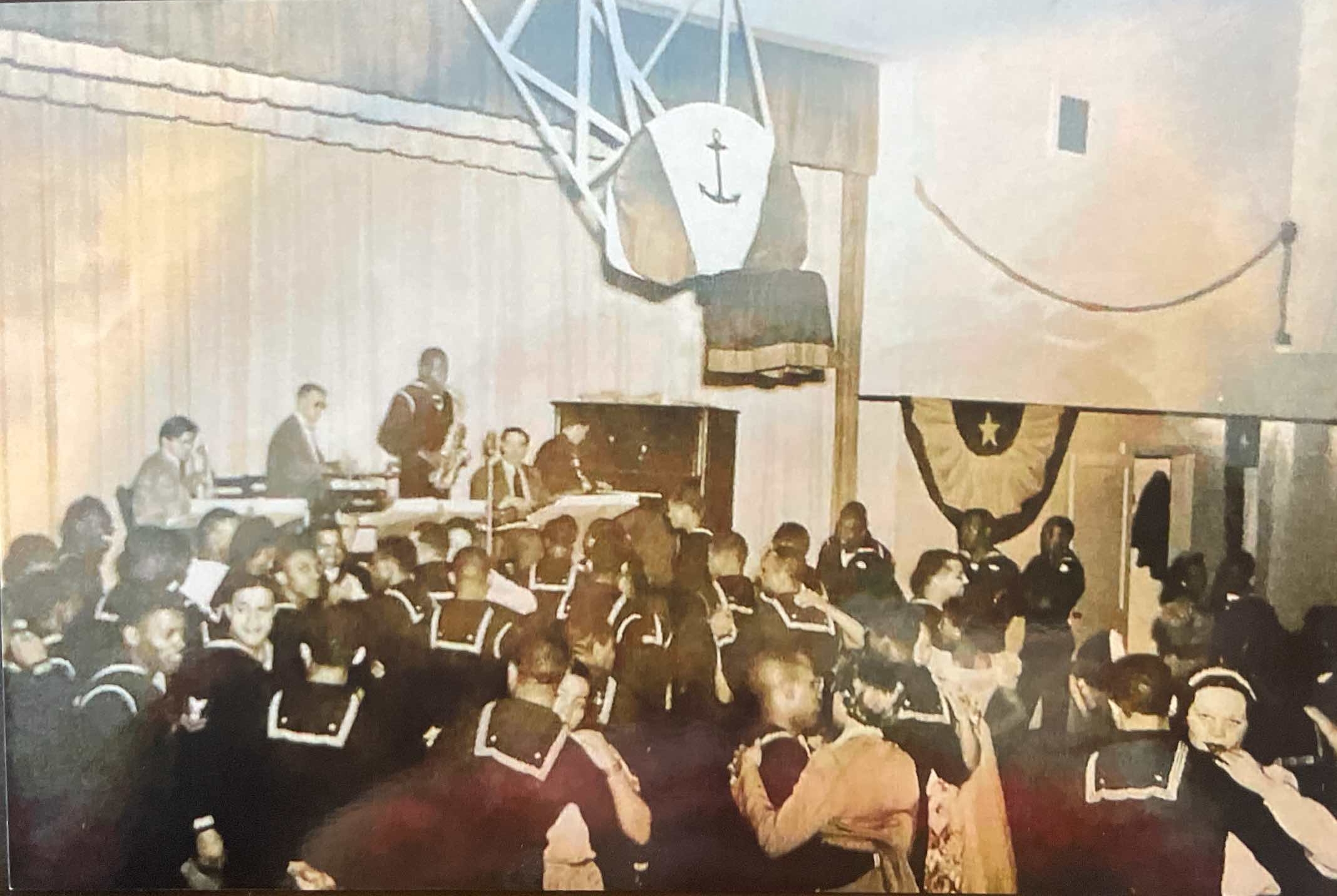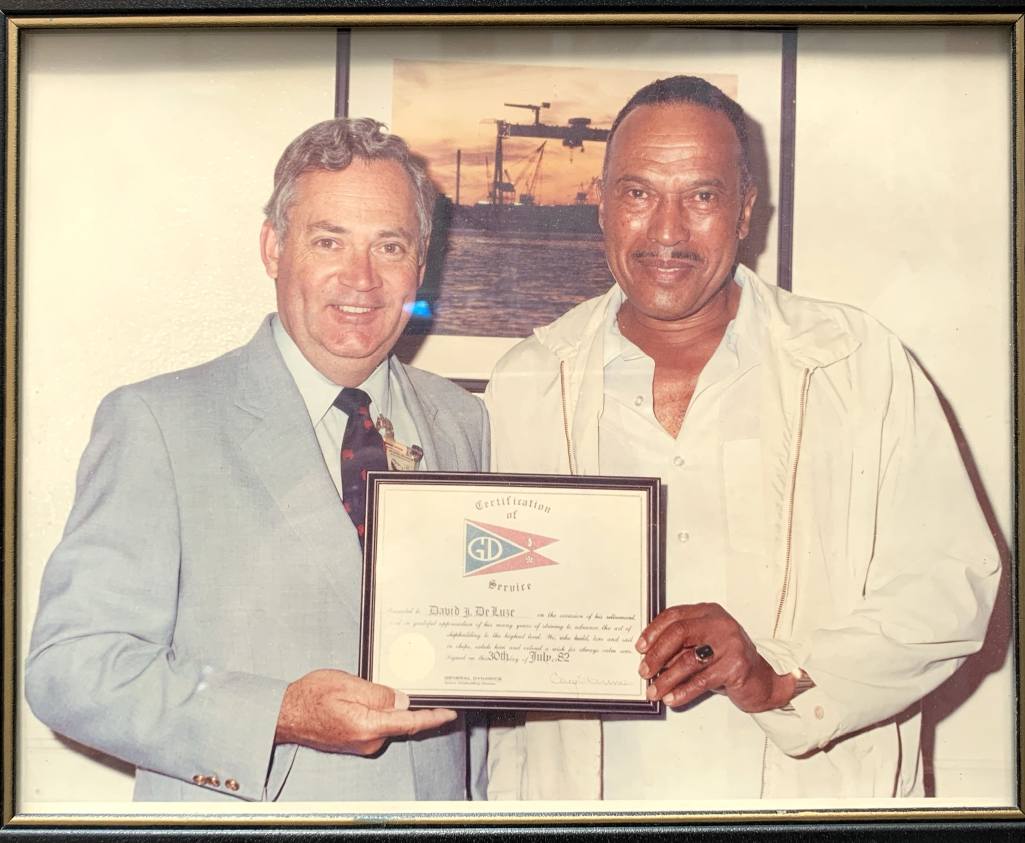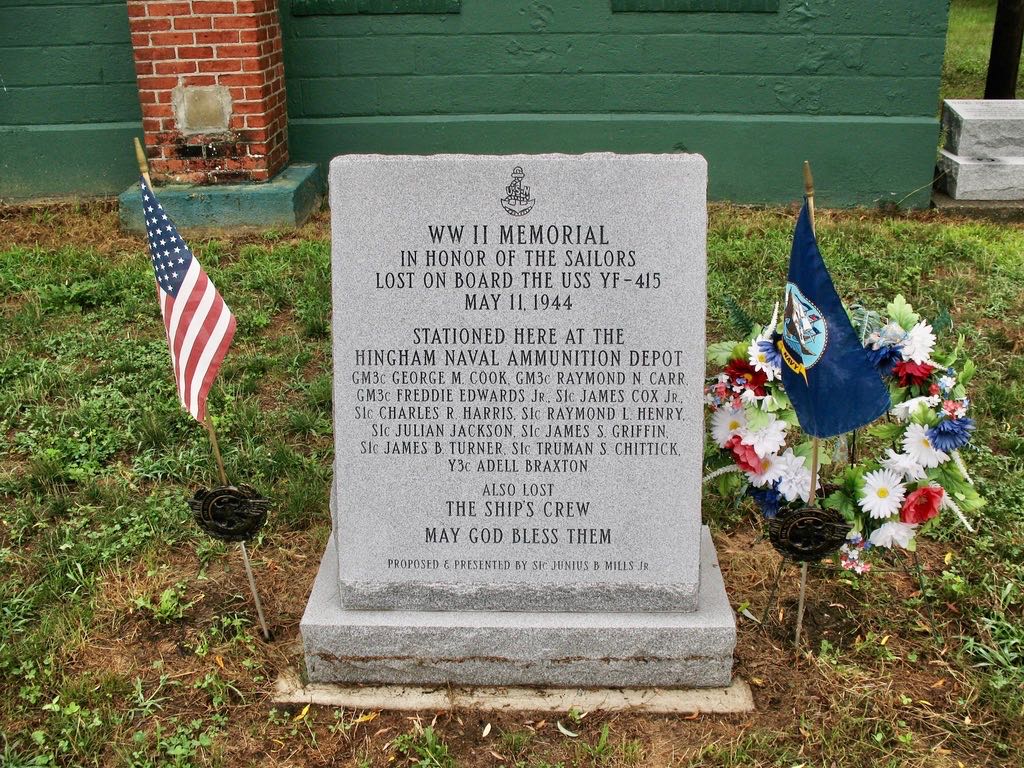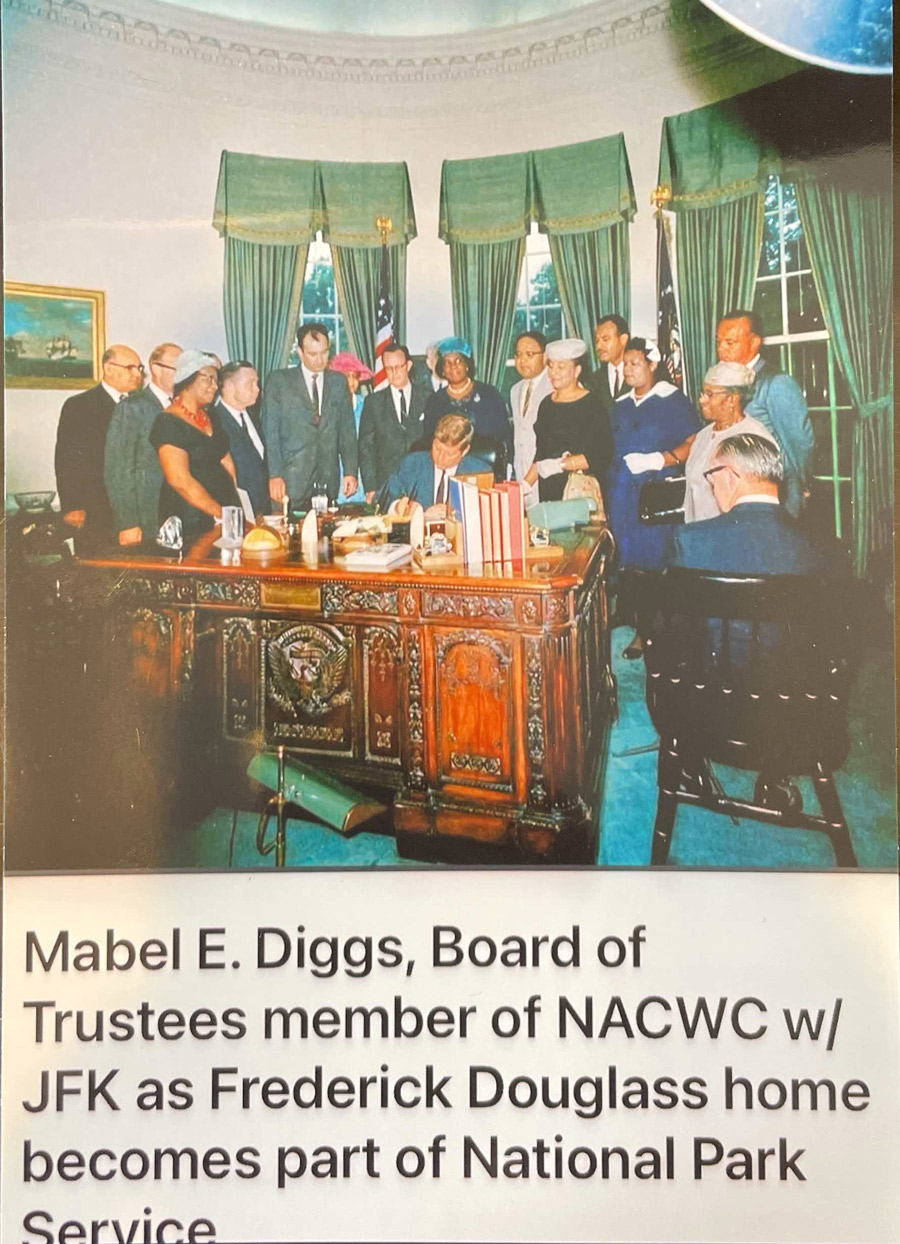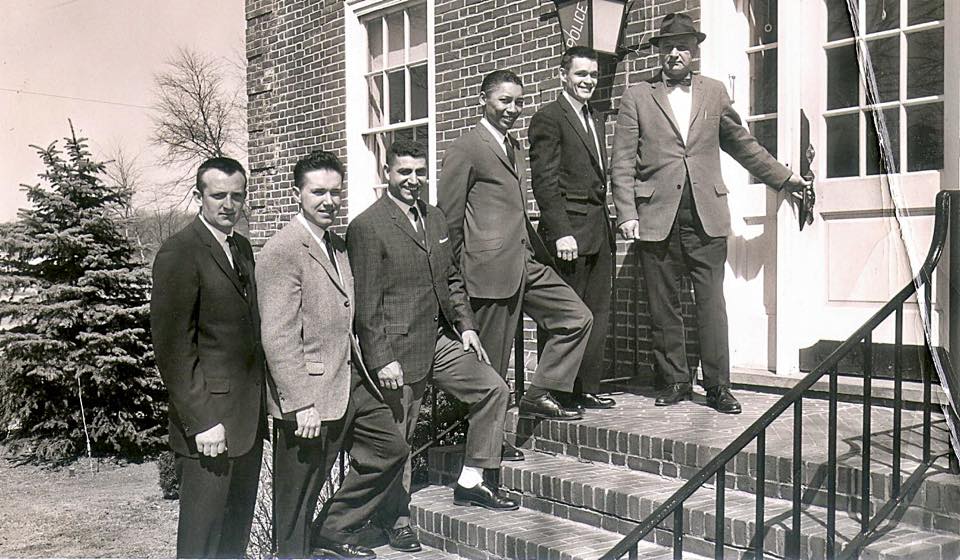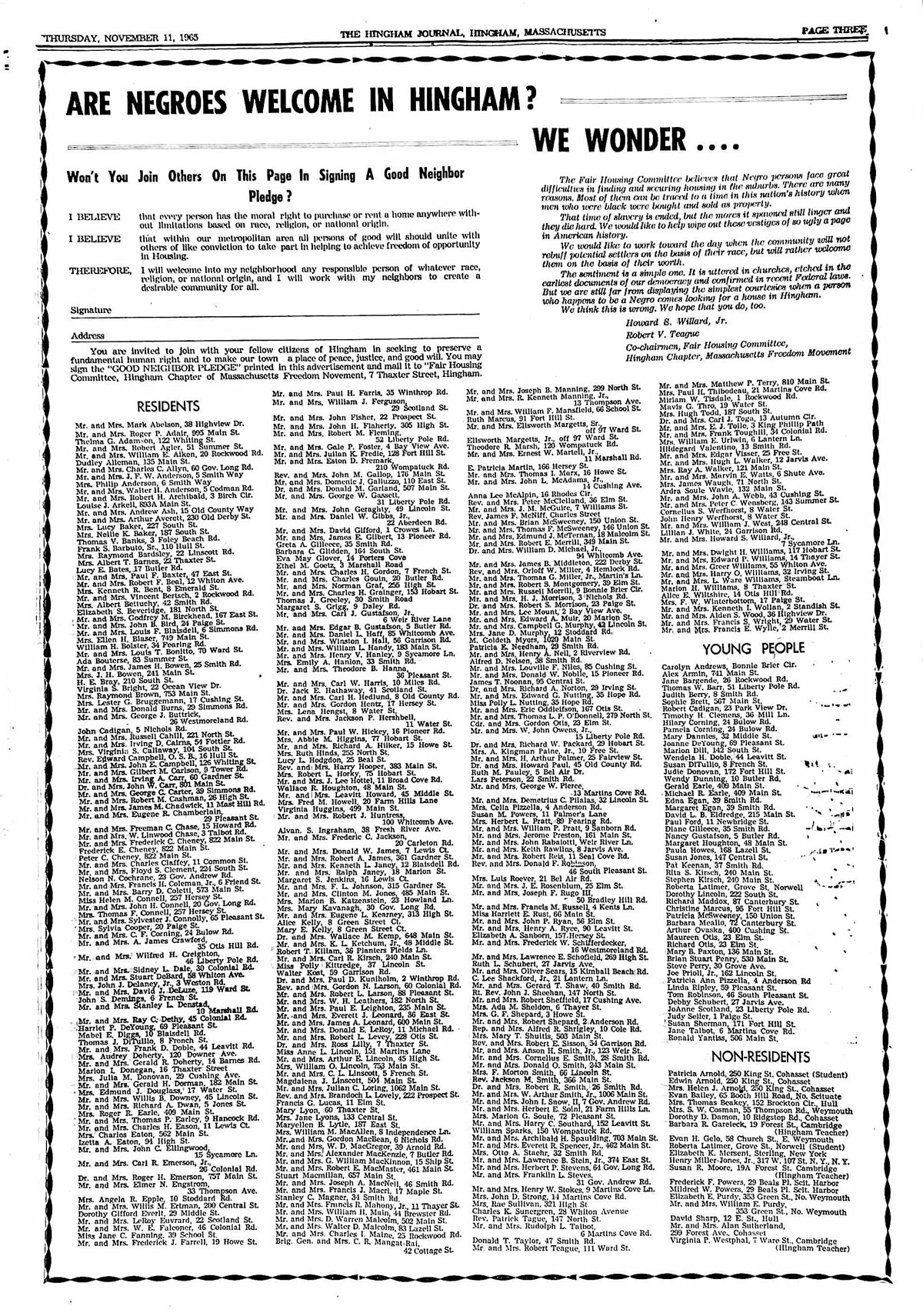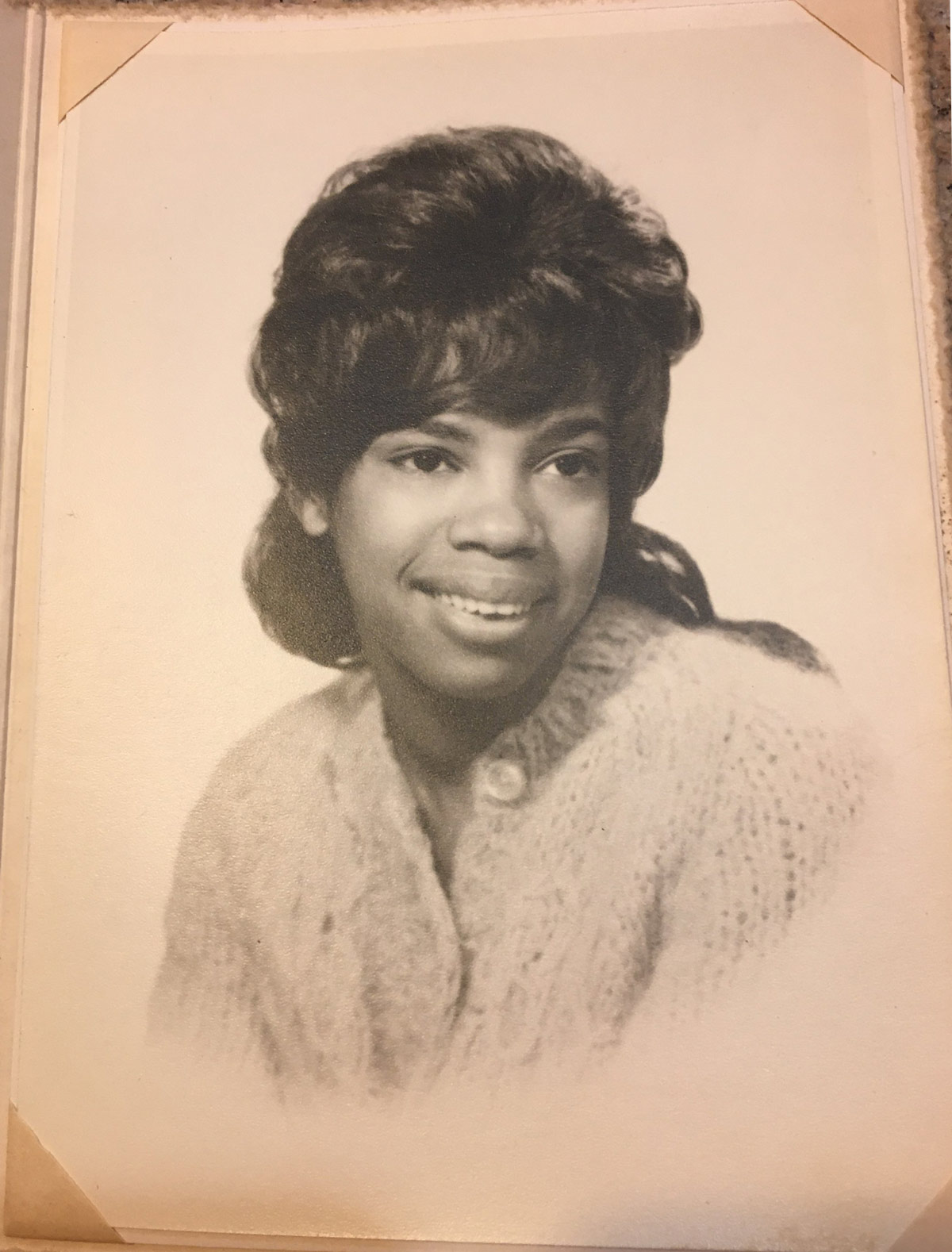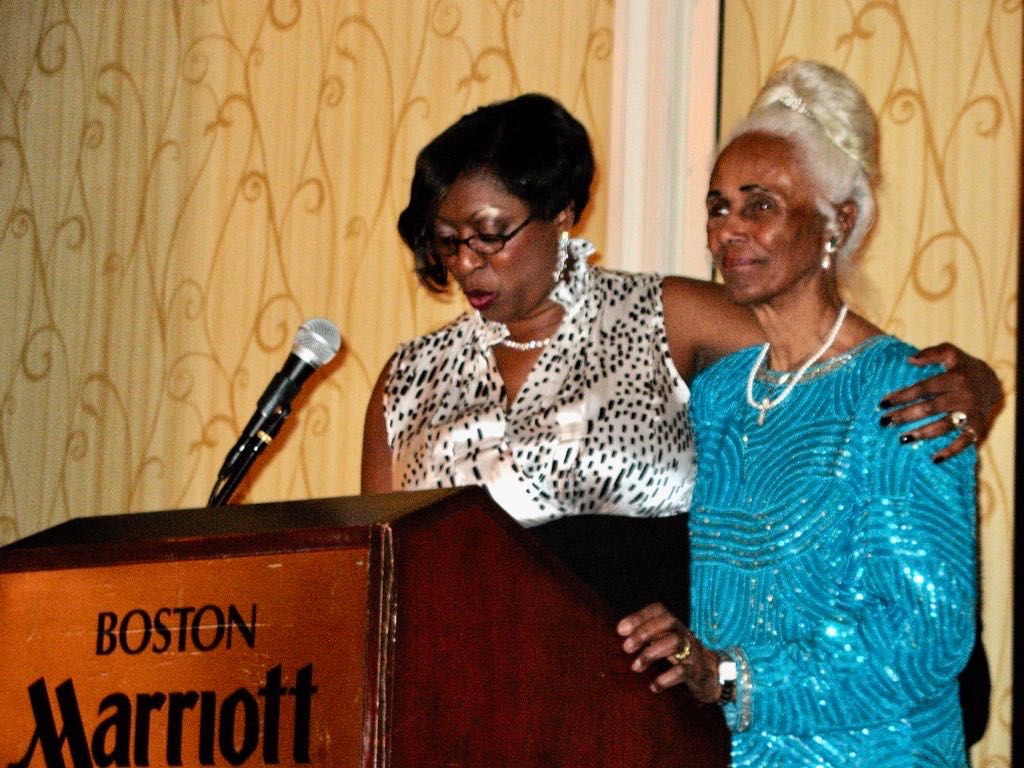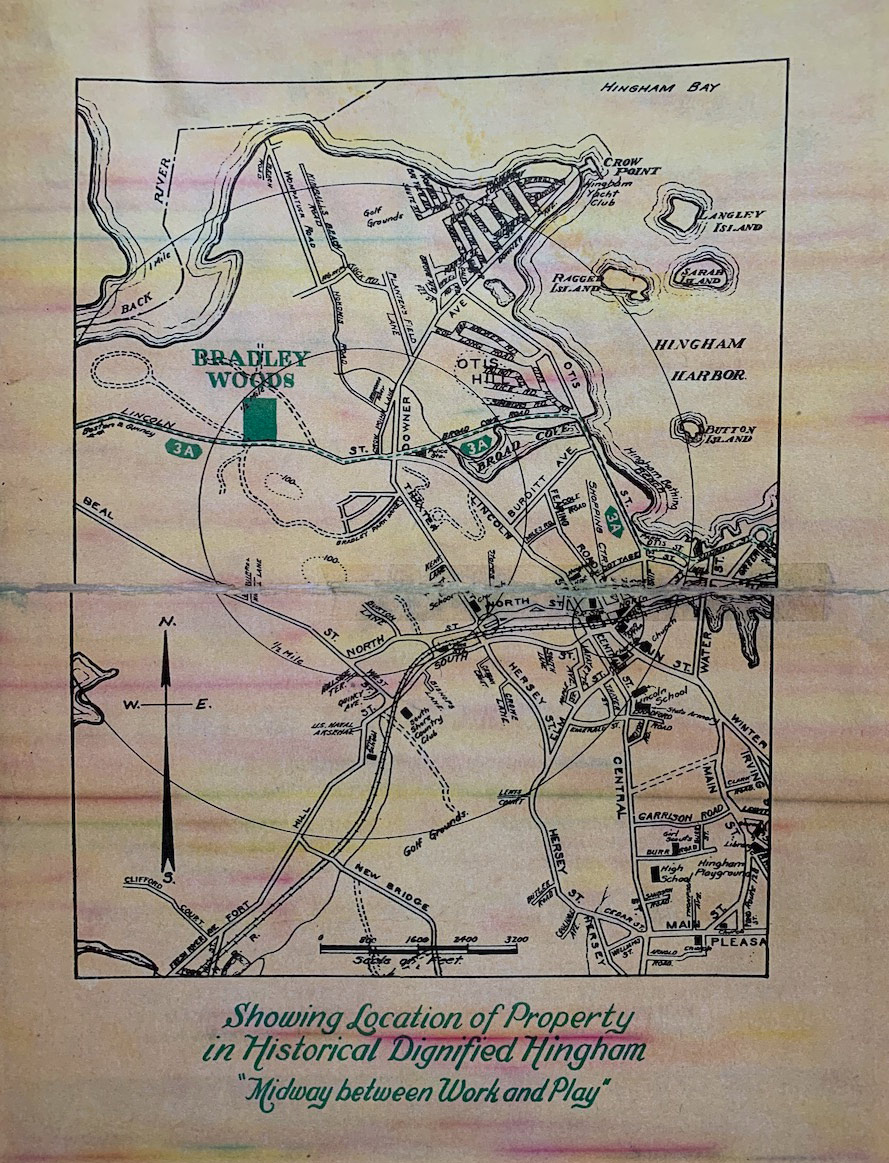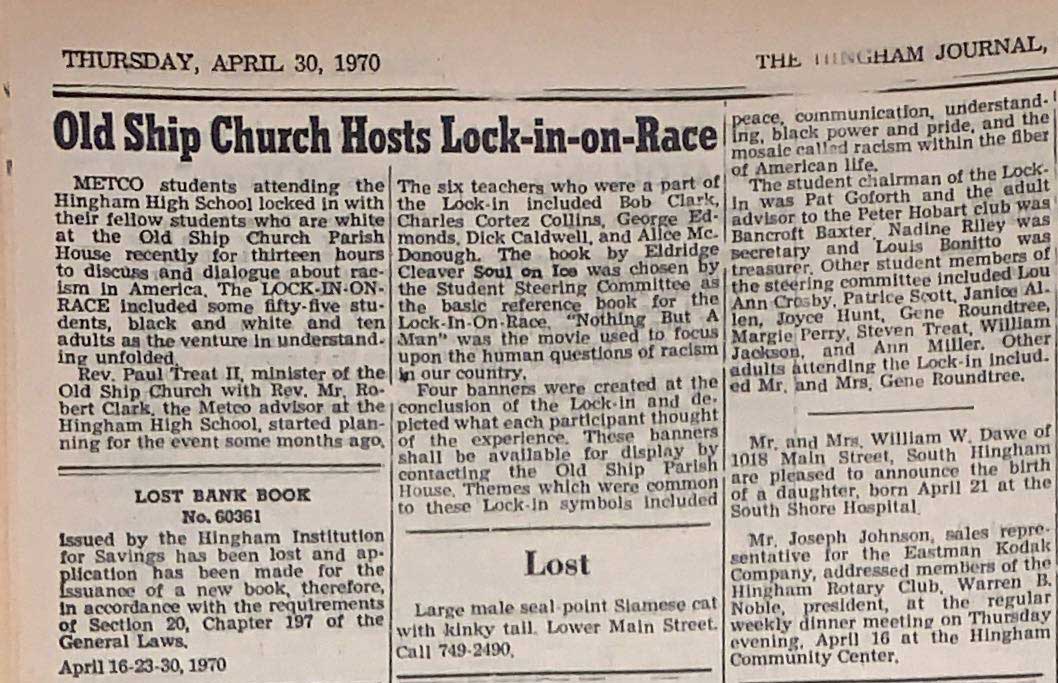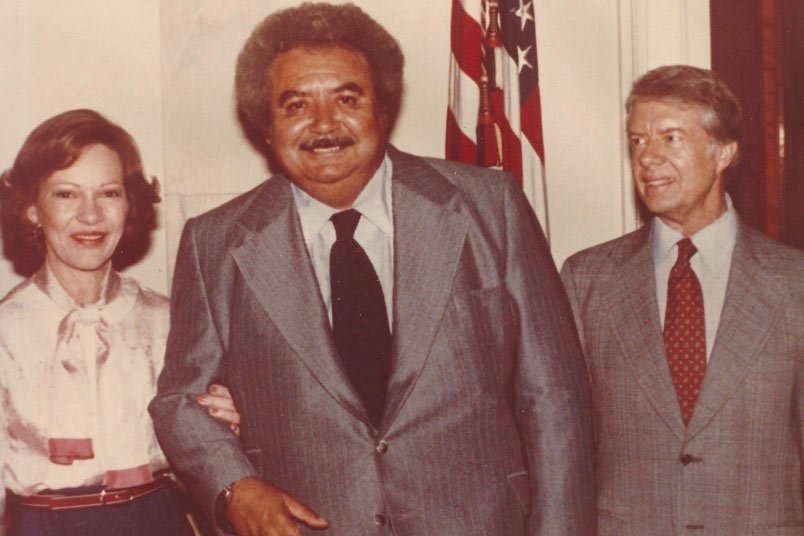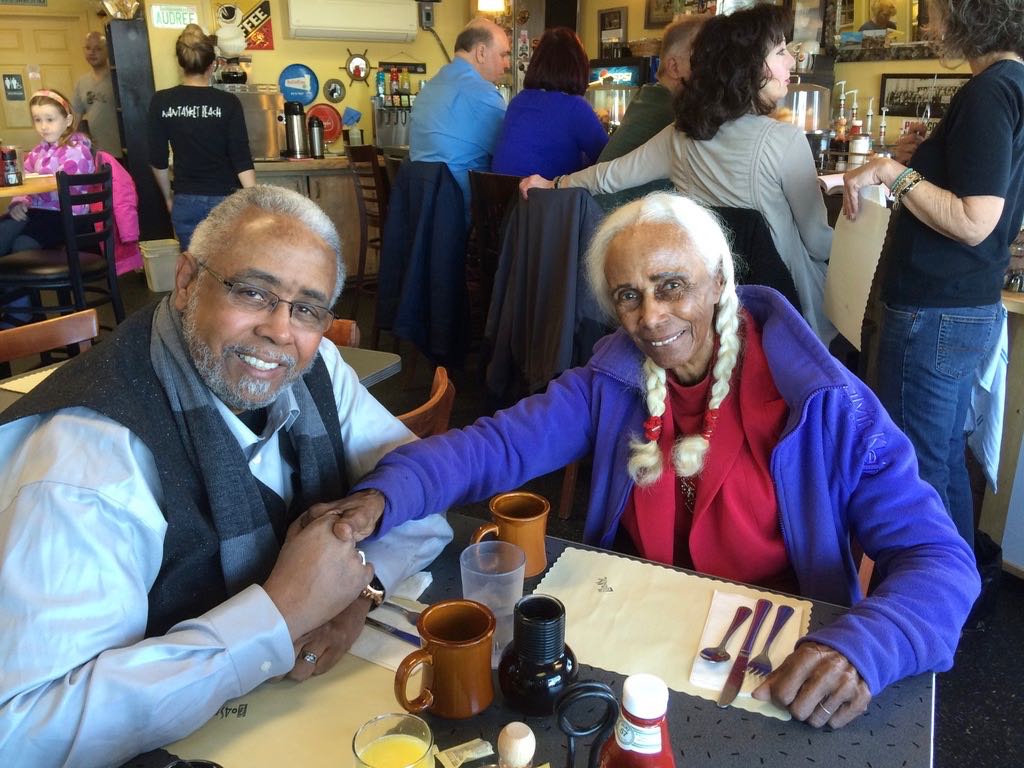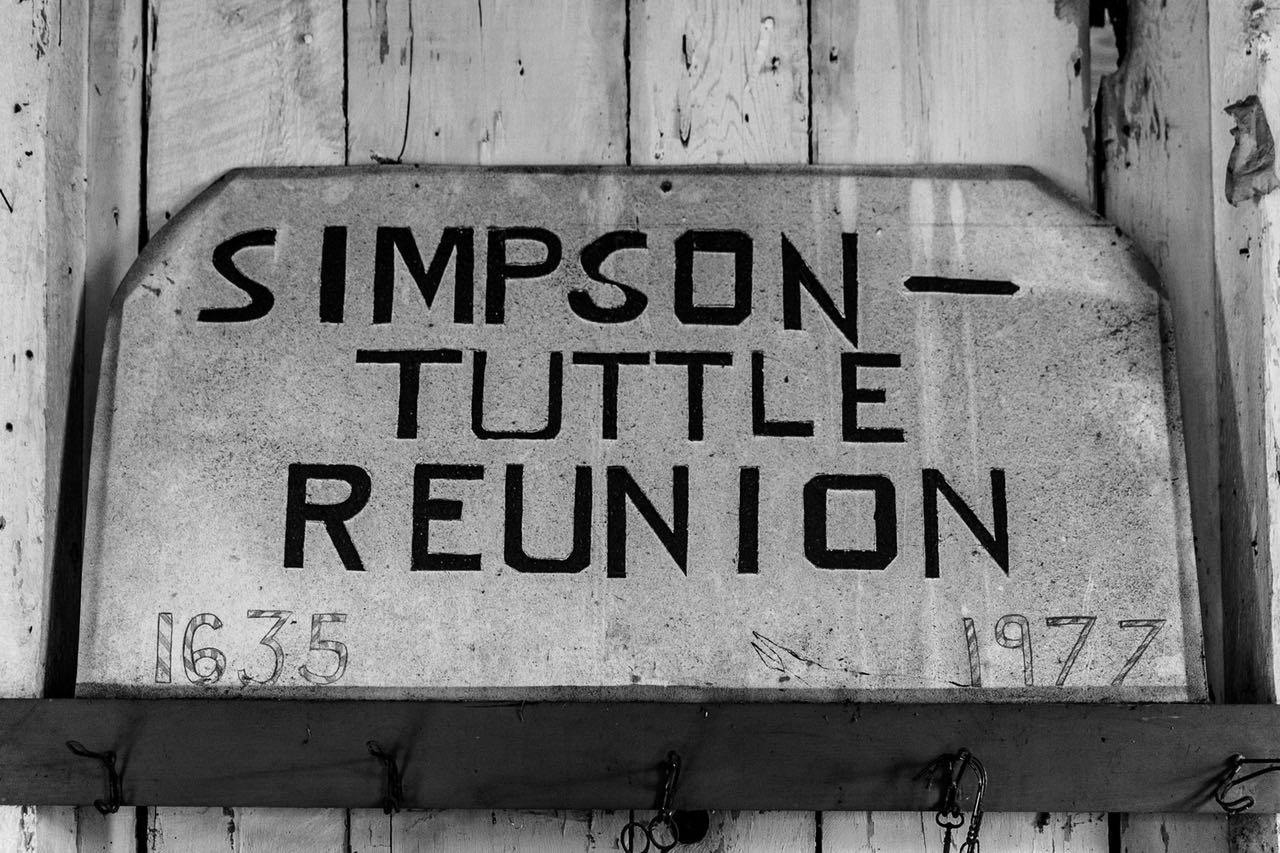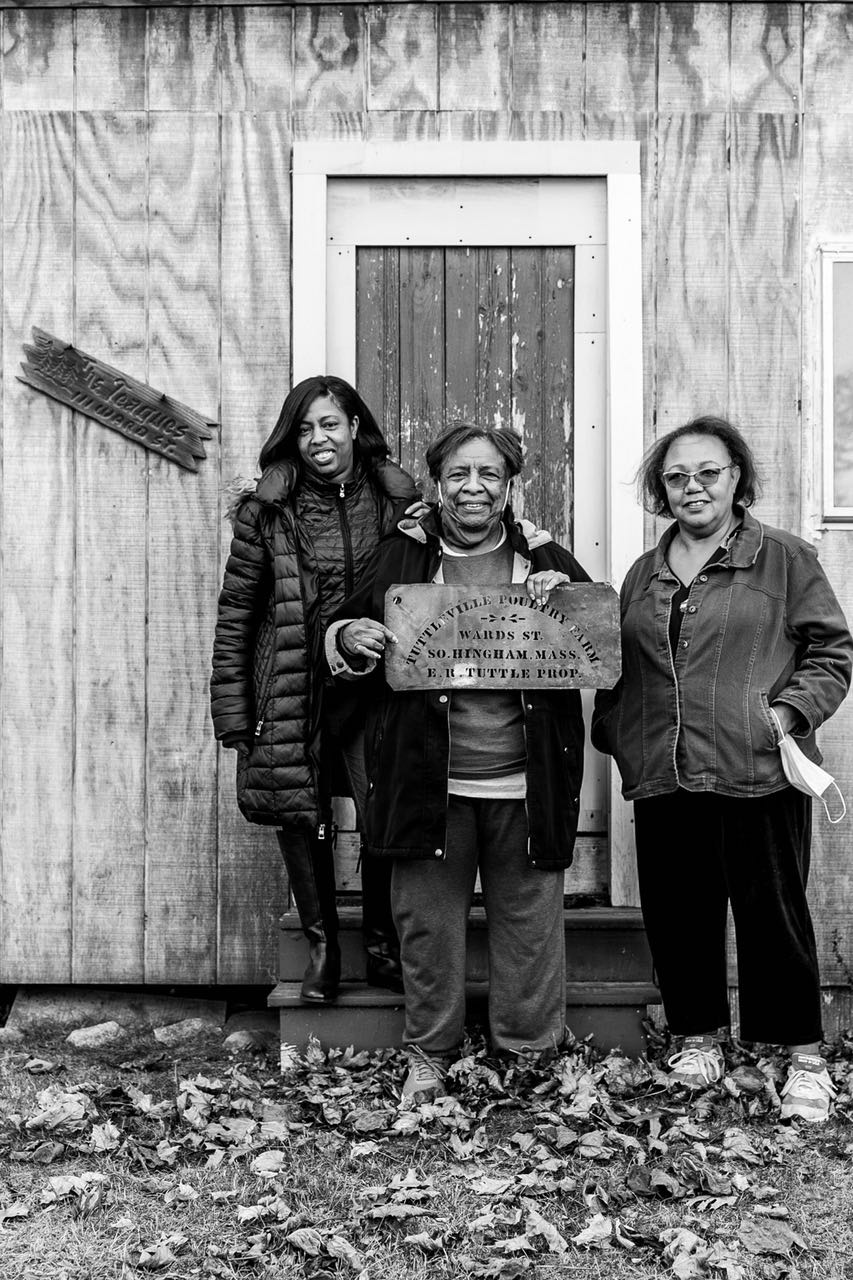Hingham’s Black History
This ongoing and collaborative timeline shares the history, achievements and contributions of our Black community members living and working in Hingham throughout the past three centuries. We know we have only begun to scratch the surface with this timeline and that there are many more stories and events to be shared and will continue to update this page. We are especially interested in hearing stories from residents whose families have lived this history. Documents, photographs, and oral histories that they would be willing to share would be greatly appreciated. Click here to submit contributions.
View references and contributors to this timeline. We will continue to update individual entries with direct citations to sources as we develop this project. We have indicated the places where we have relied on individual recollections and interviews for information.
January 2021
1732: John Fearing of Hingham sells four-year old boy named Prince to Hawkes Fearing
John Fearing of Hingham sells four-year old boy named Prince to Hawkes Fearing, and in 1735, Hawkes Fearing sells Prince, now seven years old, to Benjamin Jones. Eighteenth century records record the sale of adults and children by and to Hingham families.
1750: Hingham’s first shipyard opens
Captain Francis Barker opened Hingham’s first shipyard at Hingham Harbor, building schooners for coastal trade. Hingham’s trade in lumber and its mackerel fleet remained active in the triangular trade supporting slavery in the West Indies into the first half of the 19th century, after slavery was abolished in Massachusetts.
1758: Hingham raises a militia unit that included Black soldiers to fight against the French in Quebec
Black soldiers Flanders, Domine, and Primus Cobb were in this militia. Only Cobb survived to return to Hingham.
1764: Census reports number of enslaved persons in Hingham
Hingham’s response to the 1764 colonial census reported 77 enslaved persons in Hingham. This was above average for a new England town at that time.
1768: Property of Pompey Barnes, a free Black man, listed in tax assessment records
Pompey Barnes, a free Black man, is reported to own a house, 2 cows, 6 sheep, 8 acres of pasture, 1 acre of tillage, 3 acres of mowing land, and 2 tons of fresh hay. He and his wife and sons were among the several free Black families in 18th century Hingham.
1770s: Free and enslaved Black men fight in militia units raised in Hingham
During the Revolutionary War, free and enslaved Black men fought in militia units raised in Hingham. Among the Black men who fought in Hingham militia units were Winsor Barker, Caesar Blake, Squire Cushing, Joseph Dunbar, Joseph Falmouth, Asher Freeman, Jack Freeman, Jubal Freeman, and Caesar Scott. Cromwell Barnes a free Black man from Hingham, enlisted in a Boston militia unit in 1779.
1783: Slavery abolished in Massachusetts
Slavery was abolished by judicial decision in Massachusetts when the Supreme Judicial Court ruled, in a freedom suit brought by Quock Walker, that slavery was inconsistent with the newly adopted Massachusetts state constitution. Two years earlier, Elizabeth Freeman, known as Mumbet, had won her freedom, on the same grounds, from a western Massachusetts jury.
1789: Sarah Derby conditions bequest to Derby School upon paying to support Phebe
Sarah Derby’s bequest of funds for the founding and operation of Derby School was conditioned upon its paying for the support of “Phebe, a negro woman now living with me, during her natural life.”
1801: James Tuttle marries Rebecca Humphrey in Hingham
James Tuttle married Rebecca Humphrey in Hingham. Tuttle (ca 1780-1847) was a pillar of the small neighborhood of Tuttleville, which existed at the intersection of High and Ward Streets. His son John Tuttle is credited with leading the effort to build a small church in Tuttleville in the 1870s. Watch Harbor Media's interviews with descendants of the Tuttles.
1841: Frederick Douglass delivers one of his first recorded anti-slavery speeches in Hingham
Frederick Douglass gave one of his first recorded anti-slavery speeches in Hingham on November 4, 1841, before the Plymouth County Anti-Slavery Society. Titled “The Church and Prejudice,” it criticized ministers who used the Bible to defend slavery.
1844: Hingham Anti-Slavery Society hosts the largest anti-slavery rally in the United States
The event was referred to as the “Great Abolitionist Pic Nic” and took place in Tranquility Grove (known today as Burns Memorial Park on Hersey Street). Frederick Douglass, William Lloyd Garrison, and other luminaries of the abolition movement traveled to Hingham, where an estimated 10,000 people had gathered in support of the anti-slavery cause. Douglass gave an address at First Baptist Church before the attendees processed to Tranquility Grove for further speeches and entertainment. Watch Hingham High School graduate Emma Ryan's documentary video about Tranquility Grove
1863: Emancipation Proclamation allows for the raising of Black regiments in the Union Army
Massachusetts Governor (and Hingham resident) John Albion Andrew created the Massachusetts 54th Volunteer Infantry, the Union Army’s first fighting unit raised among free Black men. Several Black men from Hingham or with Hingham roots enlisted. Read more
1873: A group of Tuttleville residents petitions the Town of Hingham for land to build an evangelical chapel
A group of Tuttleville residents, led by John Tuttle, a son of James and Rebecca Tuttle, petitioned the Town of Hingham for land to build an evangelical chapel at the corner of Ward and High Streets. The chapel, which also functioned as a community center, dance hall and school, was called the Free Christian Mission. According to Hingham Historical Society records, official membership in 1890 was 80. Read more
1900s (early): Country Week at the Tuttle Poultry Farm
In the late 1800s, James Tuttle ran the Tuttle Poultry Farm at his family’s property located at 105 Ward Street. Soon after his death in 1906, his wife and great great grandmother to current Hingham resident Joyce Barber, Henrietta (Simpson) Tuttle, began running a one week overnight camp for black children from Boston. Learn more
1924-1927: Flaming Crosses
On July 8, 1924, the Boston Globe reported a flaming cross on Beal Street in Hingham. According to the article, police believed that members of the Ku Klux Klan had something to do with the incident. From 1927-1927, according to Not All is Changed, the Hingham Journal also reported four "fiery" crosses: one behind Lovell's greenhouse (this is very likely the Beal Street cross reported in the Globe), one at the back of Linscott Road, one in the Damstra meadow, and one atop Otis Hill.
1940: Racially restrictive covenants in Hingham home deeds
The Town approved zoning changes that made it possible to help establish Bradley Woods. Original documents from this development reveal that racially restrictive covenants were part of the deeds of these homes. The deeds state in section G that “No persons of any race other than the Caucasian race shall use or occupy any building or any lot, except this covenant shall not prevent occupancy by domestic servants of another race domiciled with an owner or tenant.” Read more
1941 US Navy takes land to create ammunition depot
The U.S. Navy announced it would take the land now known as Wompatuck State park to create a Hingham Naval Ammunition Depot Annex. To do so they evicted families and closed streets and “... took the property from the poor people .. some were black families.” Admirals who participated in the acquisition told Hingham citizen, Tom Sweeney, years later that “if you people had protested just a little more, we would have yielded.” This acquisition forced many poor families to move out of Hingham.
1941-1945: Black soldiers and sailors in Hingham
Hundreds of Black soldiers and sailors came to live in Hingham during WWII. They were not only segregated in the service, but also segregated in Hingham. They were not welcome at the Recreation Center. According to the Hingham Journal, the soldiers “know that segregation to a certain degree is mandatory [but] what to do to make them feel at home?”
1942: The South Shore Citizens Club
The South Shore Citizens Club is co-founded by Hingham residents Marion “Mother” (Lindsey) Teague and her father, Herbert Lindsey on February 24, 1942 (the organization was incorporated May 12, 1961). Throughout the years, the SSCC planned and executed many different kinds of events, including dances, annual breakfasts and buffets, teas and fundraisers. According to records, they also raised scholarship money for "minority" students on the South Shore. Read more
1943: Dance for Black soldiers
Herbert Lindsay and Mabel Diggs, with the help of a Hingham Recreation committee, organized a dance for “colored sailors stationed locally” in the Agricultural Hall (now the site of the Hingham Public Library). Guests enjoyed refreshments and several dances such as “a conga line, jitter bug contest, waltz contest, slipper dance and elimination dance.” Shirley Bonitto is recorded as the secretary of the group responsible for the dance.
February 2021
1943: David DeLuze becomes the first Black crane operator at the Hingham Shipyard
Born on Nantucket to Cape Verdean parents, David DeLuze moved to Hingham in 1942 to seek employment at the Hingham Shipyard, where he was placed on the waitlist. He found work in New Hampshire until he was finally offered a job at the Shipyard in 1943. Mr. DeLuze worked first as an oiler and then became the Shipyard’s first Black crane operator. Up until World War II, the racially segregated Navy limited Black sailors to the role of mess attendants, but the demands of the war forced the Navy to begin training them for other jobs, often involving dangerous tasks with ammunition. Read more
January 2021
1944: African-American band and military units lead the July 4th parade
The Hingham Fourth of July parade was led by a Black band and two military units. Many musicians who would continue on to become famous Jazz musicians were stationed or stopped over in Hingham and were part of the Hingham Depot Ammunition Band during the war including John Coltrane (in 1945), Al Grey, Jimmy Witherspoon, and Tommy Ridgely.
1944: USS YF-415 sinks
On May 11, 1944, the USS YF-415, from the Hingham Naval Ammunition Depot, sank 14 miles off Nahant with a crew of 30 men while performing a routine dump of obsolete ammunition. 11 of the 17 crew members who were lost were Black sailors. Today the ship sits 240 feet below sea level. View the video of the October 2004 memorial service.
February 2023
1947: Mabel Diggs
Mabel Diggs was a Hingham resident active in a myriad of initiatives both in Hingham and beyond. She was a Board of Trustees member of the National Association of Colored Women's Clubs, the chair of the music and program committee of the Massachusetts State Union of Women's Clubs and the President of the Professional Dressmakers and Designers Guild. She was a significant fundraiser for the restoration of the Frederick Douglass home.
January 2021
1950: Black Marines are stationed at the Hingham Naval Ammunition Depot
Black marines are allowed to be stationed at the Hingham Naval Ammunition Depot when the Korean War needed more soldiers. Prior to this they were not allowed to be stationed at this location.
1962: Formation of Fair Housing Committee
After Hingham resident and Black realtor Louis T. Bonitto (husband to Shirley (Tuttle) Bonitto), speaks to the South Shore Citizens Club about helping Black families find homes, a Fair Housing Committee is formed.
1962: Louis T. Bonitto: Hingham’s first Black police officer
Hingham hires its first Black police officer, Louis T. Bonitto, son of Shirley (Tuttle) Bonitto and Louis L. Bonitto. Prior to this, Mr. Bonitto was a US Army drill instructor and afterwards, he became one of the South Shore's first Black realtors as well as one of IBM's first Black account executives. Click here to watch Joe Collymore of Harbor Media's 2021 interview with Louis T. Bonitto.
1963: Formation of Hingham Chapter of the Massachusetts Freedom Movement
In the wake of national events of 1963, including the murder of Medgar Evars and the March on Washington,the Hingham Chapter of the Massachusetts Freedom Movement was formed. This group spearheaded efforts such as the "Good Neighbor Pledge" (pictured).
1964: Mary DeLuze Fernandes
Mary DeLuze Fernandes, daughter of David DeLuze (first crane operator at the Bethlehem-Hingham Shipyard) follows in her father’s trailblazing footsteps as one of the first (possibly the first!) Black women at Proctor and Gamble in Quincy during her summer job.
1965: Hingham citizens travel into Boston to hear the Rev. Dr. Martin Luther King, Jr. speak
Hingham citizens, including members of the South Shore Citizens Club, travel to Boston to join a march led by the Rev. Dr. Martin Luther King, Jr and to listen to him speak on the Boston Common.
1967: First METCO bus arrives in Hingham
First bus of 16 Hingham METCO students arrives in Hingham with the help of Mrs. Camilla Roundtree (a Hingham Citizen of the Year recipient in 2003) who goes on to serve as the Hingham METCO Director for 40 years. Roundtree was instrumental as a “mentor, chauffeur, homework helper, supporter and advocate” for METCO students. Read more
1968: Passage of Fair Housing Act
Fair Housing Act was passed and restrictive covenants deemed unconstitutional by the US Supreme Court. Some neighborhoods in Hingham, such as Bradley Woods, would no longer be able to use restrictive covenants to prevent people of color from buying homes in the neighborhood.
1970: Old Ship “Lock-In-On-Race”
Old Ship Church hosts a “Lock-In-On-Race” for fifty-five students, both Black METCO and white Hingham classmates and teachers to discuss racism in America for thirteen hours. In our interview with Eugene Roundtree, who was in attendance, he recounted that this event stimulated on-going dialogue on race in town.
February 2021
1977: Eugene Roundtree considered for position in Carter administration
Hingham Resident Eugene V. Roundtree (whose wife Camilla ran the Hingham METCO program for 40 years) is invited to the White House by President and Mrs. Carter while being considered for a position in the Small Business Administration. Read more
2003: Camilla Roundtree Named Citizen of the Year in Hingham
Camilla Roundtree and her son Eugene Roundtree at Toast in Hull. Camilla Roundtree, longtime Hingham resident and first director of Hingham's METCO program, awarded “Citizen of the Year” by Hingham Journal. Read more about Ms. Roundtree's contributions here.
2011: Tuttle and Simpson Family Reunions
Tuttle and Simpson Family Reunion held in Whitman. 120 family members gather to learn about their rich history in southeastern Massachusetts. During the reunion, research by Marion Teague and Rosa Edwards-Ellis is shared through photographs, documents and posters. During the search for information, the family found out that Marion Teague is 27% Native and a descendent of several area tribes including Chappaquiddick, Wampanoag and Nipmuc. The Tuttles have hosted many family reunions over the years, starting in 1956. Read more
January 2021
2012: JB Mills memorializes crew from 1944 depot tragedy
Memorial dedication of the USS YF-145 held at Bare Cove Park. J.B. Mills, Hingham resident and former member of the crew, funded the etched stone to memorialize the crew that died in the tragedy. The USS YF-415 sank after an explosion on May 11, 1944 killing 17 of 30 sailors on board. Mills had volunteered for USS YF-415 duty that day but was instead assigned administrative duty. He knew all the Hingham soldiers who died, all of whom were recorded to have been "Afro-Americans." According to Jim Rose, “Mills always resented the way Blacks were treated as second class citizens in the service. Black sailors were assigned menial jobs like stewards and dangerous duty like loading ammunition.” Read more
February 2021
2017: Naming ceremony at Ward Street barn
A naming ceremony is performed at the barn at 111 Ward Street for Marion Teague and her cousin Evelyn Hawksworth by Chief Yellow Feather Medicine Woman of the Chappaquiddick tribe (also known as Linda Morales-Morceau). At this ceremony, Marion Teague is named Yellow Rose.
January 2021
2020: Formation of Hingham Families of Color
Hingham Families of Color is formed as an affinity group by members of the Hingham Unity Council. It is an intercultural, interethnic community group that welcomes Hingham residents who are Black, Brown, Latino/Hispanic, Asian, Arab, and Native American, as well as families with children of color and biracial couples. Read more
2020: Vigil in Support of Black Lives
Nearly 1000 people attend a Vigil in Support of Black Lives on June 2, 2020, following the tragic death of George Floyd on May 25, 2020 at the hands of a police officer in Minneapolis, Minnesota. Read more
2021: Ward Street barn recognized as a historical building
The barn at 111 Ward Street that was the official meeting place for members of the South Shore Citizens Club is officially recognized as a historical site by the Town of Hingham thanks to the efforts of seventh generation Tuttle and Hingham resident Joyce Barber. The barn was also used as a place to celebrate family milestones such as the twenty-fifth wedding anniversary of Marion Teague and her husband Bob. Marion founded the South Shore Citizens Club with her father in 1942. Read more


